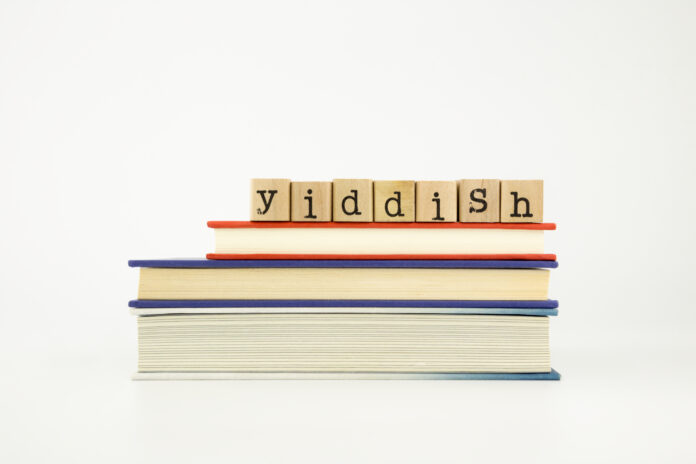Bless its journalistically responsible little heart (emphasis on “little”), The New York Times published a correction last week about an article that appeared several days earlier.
The correction reads: “An article on Sunday about the rising use of Yiddish imprecisely characterized current Yiddish speakers. It is not the case that all are monolingual.”
Many, if not most, Times corrections are about misspelled names or mistaken dates.
Occasionally, there is a minor misstatement of fact that needs to be set right for the record.
But this was one for the books. Yiddish speakers today actually speak other languages too?
Who’d ‘a thunk it?
Well, not, apparently, a celebrated academic who co-edited a book titled How Yiddish Changed America and How America Changed Yiddish. That would be one Ilan Stavans, who penned the now sort-of-corrected guest opinion column, “Yiddish Is Having a Moment” in the Gray Lady.
In addition to his seeming unawareness of the fact that Yiddish speakers have for centuries successfully communicated with their non-Jewish neighbors in places like Poland, Russia and Germany, he seems to have thought that contemporary Yiddish speakers in the US, Canada, Israel and elsewhere are at a loss to interact with anyone but one another.
The “corrected” online version isn’t much better. Instead of asserting that no “ultra-Orthodox” Yiddish speakers today are multilingual, it states that they “aren’t typically multilingual.” The essay also informs readers that the “rabbinical elite deemed [Yiddish] unworthy of serious Talmudic discussion.”
I’m not entirely sure how to say “clueless” in Yiddish. Uhn a klu? Nah, too bilingual.
A national correspondent for Fox News Radio, Eben Brown, said: “I’m pretty sure the people of which he writes speak Yiddish, Hebrew and likely the language of the country of where they live. That’s ‘multi,’ no?”
The guest column included another assertion that raised an assortment of eyebrows. Contrasting Yiddish with Hebrew, Professor Stavans professes about the latter that “For some, the language symbolizes far-right Israeli militarism.”
Considering that Ivrit is the natal tongue of Israelis of all political persuasions, one is hard-pressed to imagine the “some” for whom it symbolizes bellicosity. Maybe he meant Hamas.
The Israeli Foreign Ministry reacted rather negatively to the professor’s assertion about Hebrew with a tweet ending with the word meguchach. “Laughable.” Or, maybe, “clueless.”
The whole sugya (sorry about the Aramaic; ich bin multilingual) could be dismissed as nothing more than an isolated gelechter. But it hardly appeared in a vacuum. The periodical in which it was featured has a rather long history of cluelessness—and worse—about religious Jews.
The Times famously went on the warpath last year against some yeshivos. Using manipulated metrics, it proclaimed in a front-page story (one that continued in four full “inside” pages) that some of the state’s mosdos chinuch employed unqualified and violent teachers, forced boys to memorize meaningless material, manipulated elections and hoarded public funds. And turned out graduates incapable of making a living and doomed to poverty.
And the paper let a disgruntled minority speak for an entire system. Its reporters relied on interviews with ex-chasidim, some of whom remained anonymous. It utterly ignored the vast majority of parents and former students who cherish the education that they received in their yeshivos.
Last year, the paper offered a lengthy article titled “How the Hasidic Jewish Community Became a Political Force in New York,” which characterized the community’s laudable political activism as intimidation of elected officials, portraying politically engaged citizens voting in accord with their self-interest as something sinister. A phenomenon better known as democracy.
This past July, a piece in the Times about a New York mayoral advisory council focused on the fact that “at least 23 members of the 37-member council are Orthodox.” The group was formed in response to a 39% increase in hate crimes targeting Jews in 2022. Needless to say, the majority of those crimes were committed against visibly Jewish Jews. That is to say, Orthodox ones.
Going back several more years, opinion pieces in the Times’ pages included one celebrating intermarriage and several mocking Jewish holidays.
Then there was an editorial decrying a Brooklyn public swimming pool’s offering several hours for only men and for only women, characterizing the accommodation as kowtowing to “the religious convictions of one neighborhood group.”
Guess which. Hint: It wasn’t Muslims.
To read more, subscribe to Ami





















